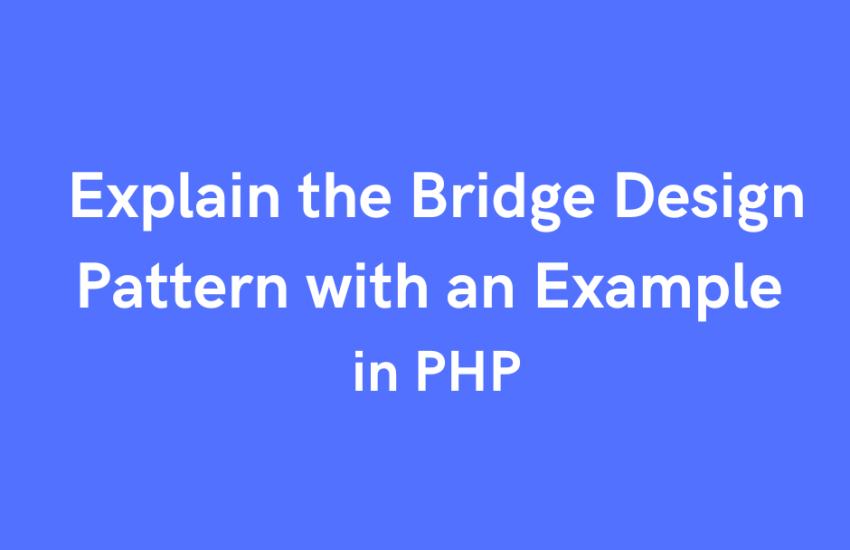The Bridge design pattern is a structural pattern that separates abstraction from implementation, allowing both to evolve independently. In PHP, the Bridge pattern promotes flexibility and extensibility by decoupling abstraction and implementation, making it easier to add new features without modifying the existing code. In this blog post, we’ll delve into the Bridge pattern, and its key components, and provide practical examples in PHP to illustrate its usage.
What is the Bridge Design Pattern?
The Bridge pattern is a structural pattern that aims to separate abstraction (an interface) from its implementation (the way it’s realized). By doing so, it allows the two to evolve independently, providing a more flexible and scalable design.
Key Components of the Bridge Pattern:
Abstraction: It defines the abstraction’s interface and maintains a reference to the implementor.
Refined Abstraction: Extends the abstraction and builds on the basic abstraction, adding more detail if needed.
Implementor: Declares the interface for concrete implementations. It doesn’t have to correspond directly to the abstraction’s interface.
Concrete Implementor: Implements the Implementor interface and defines its concrete implementation.
Example Implementation in PHP:
Let’s consider an example where we want to create different shapes (abstraction) with different rendering engines (implementation). The Bridge pattern can be applied to allow these shapes to exist independently of their rendering engines.
Step 1: Define the Implementor Interface
// Implementor
interface Renderer {
public function renderShape($shape);
}
Step 2: Create Concrete Implementors
// Concrete Implementor 1
class VectorRenderer implements Renderer {
public function renderShape($shape) {
return "Drawing a shape as vectors: " . get_class($shape);
}
}
// Concrete Implementor 2
class RasterRenderer implements Renderer {
public function renderShape($shape) {
return "Drawing a shape as pixels: " . get_class($shape);
}
}
Step 3: Define Abstraction
// Abstraction
abstract class Shape {
protected $renderer;
public function __construct(Renderer $renderer) {
$this->renderer = $renderer;
}
abstract public function draw();
}
Step 4: Create Refined Abstractions
// Refined Abstraction 1
class Circle extends Shape {
public function draw() {
return $this->renderer->renderShape($this);
}
}
// Refined Abstraction 2
class Square extends Shape {
public function draw() {
return $this->renderer->renderShape($this);
}
}
Step 5: Implementing and Using the Bridge Pattern
// Client Code
$vectorRenderer = new VectorRenderer();
$rasterRenderer = new RasterRenderer();
$circle = new Circle($vectorRenderer);
$square = new Square($rasterRenderer);
echo $circle->draw(); // Output: Drawing a shape as vectors: Circle
echo $square->draw(); // Output: Drawing a shape as pixels: Square
Conclusion: The Bridge design pattern in PHP facilitates a flexible and extensible codebase by separating abstraction from implementation. It encourages code reusability and scalability, making it easier to introduce new features without modifying existing code. In the example above, we demonstrated how the Bridge pattern can be applied to create shapes with different rendering engines. By understanding and applying such design patterns, developers can enhance the maintainability and adaptability of their codebase.




